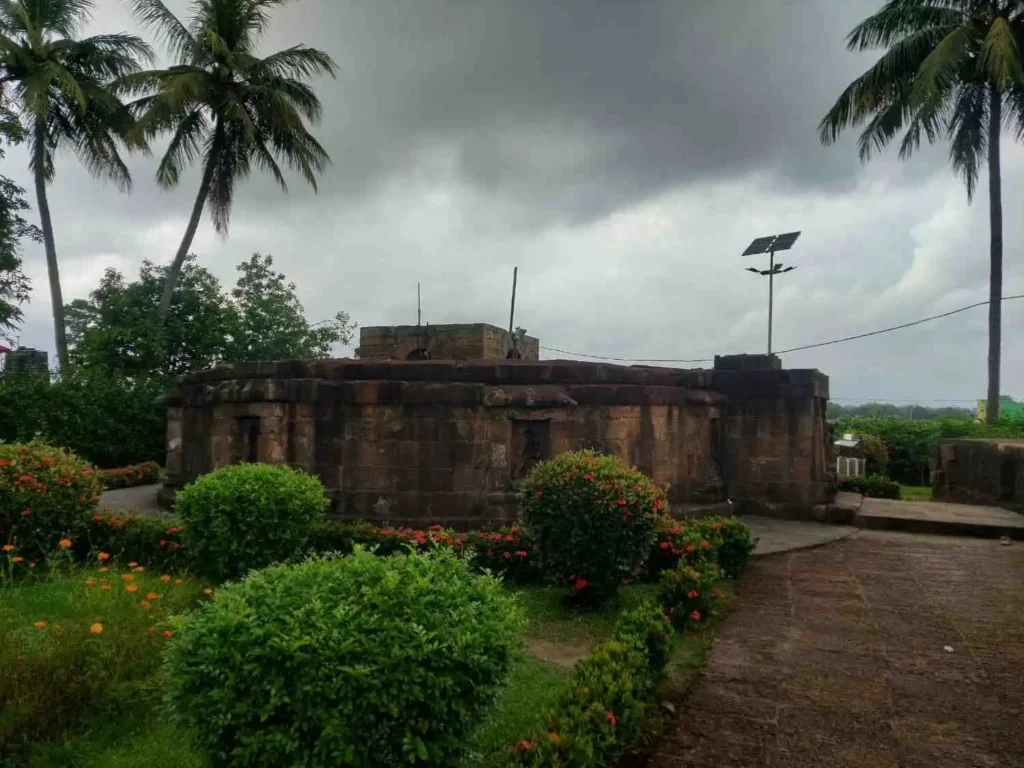Understanding Jagannath Temple Architecture
When we speak about the architectural beauty of India’s temples, the Jagannath Temple Architecture in Puri immediately commands attention — not just for its towering presence but also for its profound symbolism. Rising atop the sacred Nilagiri mound, skilled artisans built this divine abode of Lord Jagannath as a brilliant example of Kalinga-style architecture. As a result, it stands as a testament to 12th-century spiritual engineering and vision.
Furthermore, the temple’s grandeur doesn’t stop at its main structure. From the colossal Vimana (main temple tower) to the spiritually significant gateways like the Simhadwara (Lion Gate), each element is, in fact, a reflection of a deep blend of devotion, historical richness, and architectural mastery.
What Makes Jagannath Temple Architecture Unique?
The Vimana – The Towering Sanctum
The Vimana of Jagannath temple is undoubtedly the soul of the structure. Specifically, it rises nearly 192 feet above ground and houses the Garbhagriha (sanctum sanctorum), where the deities reside. Furthermore, this structure rests on an 80-foot square plinth, starting with sheer vertical walls that gradually curve inward as they rise. Additionally, it showcases the Kalinga temple style, a regional form rich with historical and aesthetic detail.
The Jagamohana – Porch of Devotion
As you move closer to the sanctum, this pillared hall serves as an important transition space. Notably, it features:
- First, a square base
- Then, thick stone walls rising up to 18 feet
- Finally, beautiful overhanging cornices that originally stood unsupported
Nata Mandapa – The Dance Hall
Known as the Natamandapa, this hall was built much later. It’s more austere but significant in function—used for ritualistic dances. The square hall, supported by plain yet mighty pillars, reminds us how art and devotion merged in temple rituals.
Bhoga Mandapa – The Hall of Offerings
Originally a part of the Konark Sun Temple, this structure was reassembled in the 18th century. In addition, its rich sandstone carvings and green chlorite doorframes with detailed Navagraha motifs are a feast for the eyes. Furthermore, a covered passage connects it to the temple kitchen, ensuring sanctity in food offerings.

Gates of Divinity – The Four Sacred Entrances
The Jagannath Temple is enclosed by a laterite wall known as Meghanada Prachira with four grand gateways:
Singha Dwara (East Gate):
Majestic lions guard the main entrance, while statues of Jaya-Vijaya flank the door.
Hasti Dwara (North Gate):
Elephants with mahouts welcome devotees here.
Asva Dwara (South Gate):
Flanked by horse sculptures.
Vyaghra Dwara (West Gate):
A simpler gate, likely used for temple services.

Aruna Stambha – The Iconic Sun Pillar
Standing tall at 33 feet, the Aruna Stambha at the entrance is a single black chlorite stone pillar, crowned by a seated Garuda. Originally from Konark, this architectural transplant adds both historical and divine value.
Lesser-Known Facts About Jagannath Temple Architecture
Did you know? Insights from archaeological records and temple legends
- The temple is built without iron and yet has withstood centuries of wear.
- The shadow of the main dome never falls on the ground, a mystery still unsolved.
- The 22 steps or Baisi Pahacha signify spiritual elevation for devotees.

People Always Ask: FAQs about Jagannath Temple Architecture
1. Why do people consider Jagannath Temple Architecture unique?
Because of its blend of spiritual symbolism, engineering mastery, and regional craftsmanship that has stood the test of time for over 800 years.
2. What is the architectural style of Jagannath Temple?
It is built in the Kalinga style, a part of the broader Nagara temple architecture, known for its vertical lines, curving spires, and rich carvings.
3. What are the four main parts of Jagannath Temple?
They are:
- Vimana (Sanctum)
- Jagamohana (Assembly Hall)
- Natamandapa (Dancing Hall)
4. Who built the Jagannath Temple?
King Anantavarman Chodaganga Deva of the Eastern Ganga dynasty is credited with building the main temple.
5. Is Jagannath Temple older than Konark Sun Temple?
Yes, Jagannath Temple came before Konark. Builders constructed the Sun Temple around 50 years later.
A Call to Spiritual Travelers and Heritage Lovers
The Jagannath Temple Architecture is not just an artistic marvel; in fact, it’s a spiritual experience. From the grand Simhadwara to the inner sanctum soaked in devotion, moreover, every part of this structure radiates peace, heritage, and resilience.
If you’re someone who cherishes India’s divine roots and historical treasures, then, consequently, a visit to Puri must be on your spiritual bucket list. Plan your journey today and feel the divine aura of Jagannath Dham!Final Words
In the hustle of modern life, visiting and understanding ancient temples like Jagannath is like inhaling the divine energy of India’s glorious past. Let this architectural treasure not just awe you — but inspire your spiritual journey.


